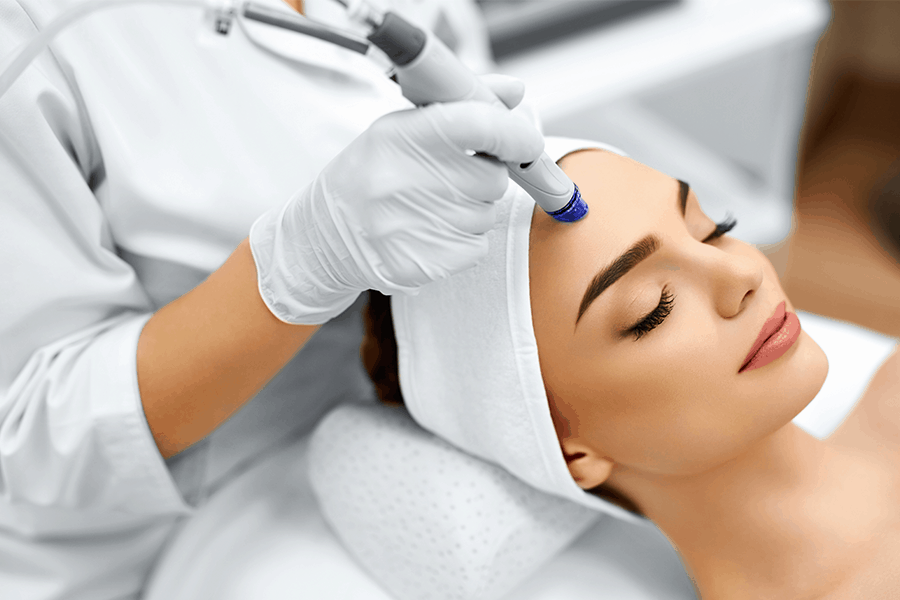Understanding Treatment Costs
Average Cost
Skin rejuvenation treatments vary in price. On average, a standard procedure fee for laser skin resurfacing costs between $500 and $3,000. This range depends on the type of treatment. Laser treatments often fall on the higher end. Chemical peels and microdermabrasion are usually less expensive.
Multiple Sessions
Achieving desired results often requires multiple sessions. One session rarely provides complete results. Patients might need several treatments over months. This increases the overall cost significantly.
Price Factors
Several factors influence the price of skin rejuvenation treatments:
-
Type of treatment
-
Provider’s experience
-
Geographic location
-
Equipment used
Highly experienced providers may charge more. Treatments in urban areas tend to be pricier.
Budget Planning
Patients should plan their budget carefully. Considering the need for multiple sessions is crucial. For example, if one session of cosmetic treatment costs a fee of $1,000 and you need five sessions, the total would be $5,000.
Frequency Impact
Treatment frequency impacts budget planning. Some treatments require monthly sessions. Others might need bi-weekly visits. Regular sessions ensure better results but increase costs.
Exploring Laser Skin Resurfacing
Factors Determining Cost
Several factors influence the cost of laser skin resurfacing. The severity of the skin condition plays a significant role in resurfacing costs. Mild conditions typically require fewer sessions, reducing overall expenses. Severe conditions may necessitate multiple treatments, increasing costs.
The type of laser used also affects pricing. Ablative lasers, such as CO2 laser resurfacing, tend to be more expensive, with plastic surgeons often discussing the average cost and final cost. These lasers remove layers of skin, providing dramatic results but at a higher final cost. Non-ablative lasers are less invasive and generally cheaper.
Size of Treated Area
The size of the treated area impacts the laser skin resurfacing costs significantly, according to the plastic surgeon. Larger areas require more time and resources, resulting in higher expenses, including average cost for laser skin resurfacing costs and surgeon fees. For instance, treating an entire face with laser skin resurfacing will cost more than targeting small regions like crow’s feet, according to the surgeon.
Clinics often provide pricing based on the area size. They might offer packages for different zones. This helps patients understand the financial commitment better.
Clinic Location and Expertise
The clinic’s location is another crucial factor. Urban centers usually have higher operating costs, which get passed on to patients, especially for procedures like laser skin resurfacing by a surgeon. Clinics in metropolitan areas often charge more than those in rural settings for laser skin resurfacing by a surgeon, impacting the average cost.
Professional expertise also influences pricing. Highly experienced dermatologists or plastic surgeons command higher fees. Their expertise ensures better outcomes, justifying the additional cost.
Additional Costs
Additional costs can arise during laser resurfacing treatments. Anesthesia fees may apply for extensive procedures. Post-treatment care products are often necessary after laser skin resurfacing to aid healing and maintain results, as advised by your surgeon.
Patients should inquire about these potential extra costs beforehand. Knowing all expenses upfront helps in budgeting effectively.
Insurance Considerations
Insurance rarely covers laser skin treatments as they are considered cosmetic. However, if the procedure addresses medical conditions like scars from accidents or surgeries, partial coverage might be possible.
Patients should check with their insurance providers before proceeding. Understanding coverage options can alleviate some financial burdens.
Treatment Process and Procedure
Consultation
A consultation is essential before any cosmetic procedure. The doctor assesses the patient’s skin type and concerns. This helps in tailoring the treatment plan to individual needs and budget.
During the consultation, the doctor will discuss various options. They will explain the benefits and risks of each treatment. Patients should ask questions to understand the procedure better.
Preparation
Preparation for a skin care procedure involves several steps. The patient may need to avoid certain medications. These could include blood thinners or anti-inflammatory drugs.
The skin must be clean and free from makeup. Sometimes, a topical anesthetic is applied. This minimizes discomfort during the procedure.
Treatment Session
The actual treatment session can vary in length. It usually lasts between 30 minutes to an hour. Laser skin resurfacing, for example, can take about 45 minutes.
The doctor uses specialized equipment during the session. For laser treatments, a handheld device emits light pulses. Each pulse penetrates the skin layers to promote collagen production.
Post-Treatment Care
After the procedure, post-treatment care is crucial. Patients might experience redness or swelling. Applying ice packs can reduce these symptoms.
Doctors often recommend specific skincare products. These help in soothing and healing the skin. Avoiding sun exposure is also important to prevent complications.
Follow-Up Sessions
Skin rejuvenation treatments often require multiple sessions. The interval between sessions is typically four to six weeks. This allows the skin to heal properly.
Each session builds on the previous one. Consistent follow-ups ensure optimal results over time.
Breakdown of Expenses
Consultation Fees
Consultation fees are the first expense in skin rejuvenation treatments. These fees cover the initial assessment by a dermatologist or skincare specialist. Typically, these fees range from $50 to $200. The consultation helps determine the best treatment plan for your skin type and concerns.
Equipment Use
The use of specialized equipment is another significant cost. Laser machines, microdermabrasion devices, and chemical peel solutions are common tools. The costs for using these machines vary widely. For example, laser treatments might cost between $200 and $500 per session. Microdermabrasion can be cheaper, often ranging from $75 to $150 per session.
Practitioner’s Charges
Practitioner’s charges include the fees for the expertise and time of the professional performing the treatment. Dermatologists may charge more than estheticians due to their advanced training. On average, practitioners’ fees can range from $100 to $300 per hour. This fee structure depends on the complexity of the procedure and the practitioner’s experience level.
Aftercare Products
Aftercare products are essential for maintaining results post-treatment. These products can include moisturizers, sunscreens, and serums. The cost of aftercare products varies based on brand and ingredients but typically ranges from $30 to $100 per product. High-quality aftercare ensures better results and minimizes complications.
Follow-Up Visits
Follow-up visits are crucial for monitoring progress and addressing any issues that arise post-treatment. Each follow-up visit might add an additional $50 to $150 to the total expense. Regular follow-ups ensure that the skin heals properly and that the desired results are achieved.
Package Deals
Package deals offer significant savings for those committed to long-term skin care plans. Clinics often provide bundled sessions at a discounted rate. For instance:
-
A package of five laser treatments might cost $1,800 instead of paying $400 per session.
-
Microdermabrasion packages could offer six sessions for $600, saving you around $150 compared to individual pricing.
These packages make it easier to budget for ongoing treatments.
Additional Factors
Several additional factors can influence overall costs:
-
Location: Urban clinics often charge more than rural ones.
-
Clinic Reputation: Well-known clinics with high success rates may have higher prices.
-
Treatment Type: Advanced treatments like fractional lasers cost more than basic peels or microdermabrasion.
Financing Options Available
Payment Plans
Many clinics offer payment plans to help manage the cost of skin rejuvenation treatments. These plans allow patients to spread the final cost over several months. This can make expensive procedures more affordable. Some clinics may partner with financing companies to provide these options.
Patients should inquire about interest rates and any additional fees associated with these plans. It’s important to read the terms carefully. This ensures that there are no hidden costs.
Insurance Coverage
Insurance may cover some skin rejuvenation treatments if they are deemed medically necessary. For example, treatments for severe acne or other skin conditions might be covered. Patients should check with their insurance provider.
It’s crucial to get pre-authorization from the insurance company. This confirms that the treatment will be covered. Without pre-authorization, patients might end up paying out-of-pocket.
Third-Party Financing
Third-party financing is another option for covering the costs of cosmetic procedures. Companies like CareCredit offer credit specifically for medical expenses. These credit options can be used at many clinics.
Interest rates and repayment terms vary by provider. Patients should compare different third-party financing options. This helps in finding the best deal.
Credit Cards
Using a credit card is a common way to finance skin rejuvenation treatments. Many people prefer this method due to its convenience. However, interest rates on credit cards can be high.
It’s advisable to use a card with a low-interest rate or one that offers promotional financing. This can reduce the overall cost of the treatment.
Personal Loans
Personal loans from banks or credit unions are another financing option. These loans usually have lower interest rates compared to credit cards. Borrowers receive a lump sum amount which can be used to pay for treatments.
Repayment terms can range from one to five years. It’s important to compare loan offers from different lenders.
Health Savings Accounts (HSAs)
Health Savings Accounts (HSAs) can also be used for certain skin rejuvenation treatments. Contributions to HSAs are tax-deductible, making this an attractive option for some patients.
However, not all treatments qualify for HSA use. Patients should verify eligibility before using HSA funds.
Post-Treatment Care
Importance
Following post-treatment care instructions is crucial. It helps maximize the benefits of skin rejuvenation treatments. Neglecting these steps can lead to complications.
Proper care involves gentle cleansing. Avoid harsh products. Use a mild, non-abrasive cleanser. Moisturize regularly to keep the skin hydrated.
Avoid direct sunlight. UV rays can damage sensitive skin. Wear sunscreen with high SPF daily. This prevents further skin damage.
Product Costs
Post-treatment skincare products can add to the overall cost. These products are often specialized and more expensive than regular ones.
Expect to spend on:
-
Gentle cleansers
-
High-quality moisturizers
-
Sunscreens with high SPF
-
Serums for skin repair
These items help in healing and maintaining results. Investing in them is essential for optimal outcomes.
Longevity of Results
Proper aftercare extends the longevity of treatment results. This affects long-term costs positively. Without proper care, results may fade quickly, requiring additional treatments.
Regular use of recommended products sustains the effects. Healthy habits like staying hydrated and eating well also contribute.
Common Questions Answered
Effectiveness vs. Cost
Many people wonder if the cost of skin rejuvenation treatments is worth it. The answer depends on individual needs and goals. Treatments like chemical peels, laser therapy, and microneedling have different price points. Laser treatments can range from $200 to $2,000 per session. Chemical peels are generally cheaper, costing between $150 and $300. Microneedling sits in the middle, often costing around $300 per session.
Affordability of Laser Resurfacing
A common misconception is that laser skin resurfacing is unaffordable. While it’s true that these treatments can be expensive, they offer long-lasting results. Many clinics provide financing options or payment plans to make them more accessible. Laser resurfacing can treat deep wrinkles and scars, which might save money on future treatments.
Pain and Discomfort
Pain is a significant concern for many considering skin rejuvenation treatments. Most procedures involve some level of discomfort, but it varies by treatment type. For example:
-
Chemical peels may cause a burning sensation.
-
Microneedling feels like tiny pinpricks.
-
Laser treatments can feel like rubber bands snapping against the skin.
Topical anesthetics are often used to minimize pain. Patients usually report mild discomfort rather than severe pain.
Downtime and Recovery
Downtime is another important factor when choosing a treatment. Chemical peels often require a few days of recovery as the skin peels away dead cells. Microneedling usually has minimal downtime, with only slight redness for a day or two. Laser treatments can have longer recovery times, sometimes up to two weeks, depending on the intensity.
Expected Outcomes
The expected outcomes vary based on the type of treatment and individual skin conditions. Chemical peels can improve skin texture and tone after just one session. Microneedling boosts collagen production, leading to firmer skin over time. Laser resurfacing offers dramatic improvements in skin clarity and smoothness but may require multiple sessions for optimal results.
Statistics and Success Rates
Statistics show high satisfaction rates among patients who undergo skin rejuvenation treatments. According to a 2021 survey by the American Society for Dermatologic Surgery (ASDS), 92% of patients reported being satisfied with their laser resurfacing results. Chemical peels had an 85% satisfaction rate, while microneedling scored 80%.
Suitability and Sessions
Initial Consultation
A consultation is essential before starting skin rejuvenation treatments. Doctors assess your skin type and condition during this session. They check for issues like acne scars, wrinkles, or sun damage.
Skin type matters a lot. Oily, dry, or sensitive skin may require different treatment approaches. Doctors also consider your medical history. Allergies or past reactions to treatments are important factors.

Number of Sessions
The number of sessions affects the overall cost. More sessions usually mean higher costs. Some treatments need only one session, while others may require multiple visits.
Laser treatments often need several sessions. Each session removes a layer of damaged skin. Chemical peels might also need multiple applications. The depth of the peel determines how many times you must return.
Personalized Treatment Plans
Doctors create personalized plans based on your needs and budget. They aim to balance effectiveness and cost. For example:
-
If you have severe acne scars, more sessions might be necessary.
-
For mild wrinkles, fewer treatments could suffice.
Doctors discuss these options with you during the consultation. They explain the benefits and drawbacks of each approach.
Balancing Effectiveness with Budget
Balancing effectiveness and budget is crucial. Some people prioritize quick results over cost. Others prefer a slower, more affordable approach.
Doctors often suggest a mix of treatments to manage costs. For instance:
-
Combining laser treatments with topical creams.
-
Alternating between chemical peels and microdermabrasion.
These combinations can provide good results without breaking the bank.
Longevity of Results
Expected Duration
The results of skin rejuvenation treatments can vary. Some treatments offer immediate results that last for a few months. Others may show gradual improvements over a year. For example, laser resurfacing can provide noticeable results for up to two years.
Lifestyle Impact
Lifestyle choices play a significant role in the longevity of treatment outcomes. Smoking and excessive sun exposure can shorten the duration of results. A healthy diet and regular exercise can help maintain youthful skin longer.
Skincare Routine
A consistent skincare routine is crucial. Using sunscreen daily protects the skin from UV damage. Moisturizers keep the skin hydrated and supple. Regular exfoliation removes dead skin cells, enhancing treatment effects.
Maintenance Sessions
Maintenance sessions are often necessary to sustain results. Treatments like chemical peels might need touch-ups every few months. Botox injections typically require follow-up sessions every 3-6 months.
Long-term Cost Planning
Factoring in maintenance sessions is essential for long-term cost planning. The initial investment might seem high, but spreading out costs over time can make it manageable. For instance, budgeting for quarterly touch-ups ensures continuous benefits without financial strain.
Investment Value
Considering the longevity of results helps determine the value of the investment. Treatments with longer-lasting effects might justify higher upfront costs. Conversely, shorter-term solutions might be more affordable initially but could require frequent maintenance.
Summary
Skin rejuvenation can be a game-changer for your appearance and confidence. Understanding the costs, processes, and care involved ensures you make informed decisions. Whether it’s laser resurfacing or other treatments, knowing what to expect helps you plan better.
Ready to rejuvenate your skin? Explore your options and take the first step towards a refreshed look. Consult with experts to find the best treatment for you. Your journey to radiant skin starts now!
Frequently Asked Questions
What is the average cost of skin rejuvenation treatments?
The average cost varies from $200 to $2,000 per session, depending on the type of treatment and location.
How many sessions are typically required for effective results?
Most treatments require 3-6 sessions for optimal results. This can vary based on individual skin conditions and goals.
Are there financing options available for skin rejuvenation treatments?
Yes, many clinics offer financing plans to make treatments more affordable. Check with your provider for specific options.
What does the post-treatment care involve?
Post-treatment care includes moisturizing, avoiding sun exposure, and following any specific instructions given by your dermatologist.
How long do the results of skin rejuvenation treatments last?
Results can last from several months to a few years, depending on the treatment type and individual skin care routine.
Is laser skin resurfacing painful?
Laser skin resurfacing may cause mild discomfort. Most patients describe it as a tingling or warm sensation. Topical anesthetics are often used to minimize pain.
Who is a suitable candidate for skin rejuvenation treatments?
Ideal candidates are those with visible signs of aging, sun damage, or uneven skin texture. A consultation with a dermatologist can determine suitability.





